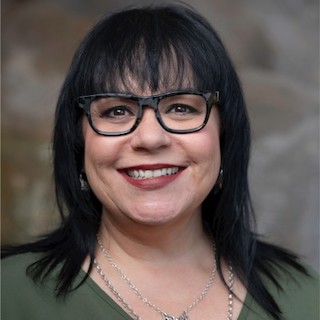
- Details
- By Elyse Wild
- Economic Development
A new change in Federal Communications Commission rules has the potential to bring affordable broadband internet to more communities in Indian Country.
On Jan. 27, the FCC voted unanimously to make tribal libraries fully eligible for participation in its E-Rate Program, which provides libraries and schools discounts of up to 90 percent on broadband services.
The federal program deploys $3.9 billion a year to eligible institutions, which, until now, has excluded tribal libraries.
Want more news like this? Get the free weekly newsletter.
For Dr. Traci Morris, the victory is more than 10 years in the making and the first step of many to bridge the vast digital divide in Indian Country. Morris is a tribal broadband policy advocate and the director of the American Indian Policy Institute at Arizona State University. In 2019 she co-authored “Tribal Technology Assessment: The State of Internet Service on Tribal Lands,” the first-ever quantitative study of broadband access, device use and uses of the internet by tribal peoples on tribal lands.
 Dr. Traci Morris, executive director of the American Indian Policy Institute. (Courtesy photo)“This is a big deal,” Morris, a member of the Chickasaw Nation of Oklahoma, told Tribal Business News. “It is going to make a huge difference in broadband access. A lot of people have been working on this for a long time.”
Dr. Traci Morris, executive director of the American Indian Policy Institute. (Courtesy photo)“This is a big deal,” Morris, a member of the Chickasaw Nation of Oklahoma, told Tribal Business News. “It is going to make a huge difference in broadband access. A lot of people have been working on this for a long time.”
The exclusion of tribal libraries in the substantial E-Rate funding has exacerbated disparities in access to fundamental services, such as telemedicine, distance learning, legal information, government subsidies and more.
According to the FCC, a staggering 628,000 tribal residences lack access to basic broadband, a rate more than four times that of the general population. For tribal member who do have access, it is often inadequate and costly.
The E-Rate program is run by the Universal Service Administrative Company (USAC), an independent nonprofit under the oversight of the FCC. Established in 1996, the E-Rate Program collects universal service contributions from carriers and helps libraries across the country secure access to affordable telecommunications services by providing discounts from 20 percent to 90 percent. In 2014, the FCC modernized the program to focus on high-speed internet access. Discounted rates are determined by the prevalence of poverty in the population served.
Before the Jan. 27 decision, eligible institutions included public and nonprofit K-12 schools and public, private, research and academic libraries. Tribal libraries are designated by tribal councils and often are not strictly libraries; they are language repositories, historical archives, community centers and more. Morris cited this as a challenge when advocating for the change in the E-Rate Program language.
While working with the Association of Tribal Archives, Libraries, and Museums (ATALM), Morris first presented her findings from “Digital Inclusion in Native Communities: The Role of Tribal Libraries” to the FCC in 2014 to advocate for the language change.
“(The language) was such an oversight, and it could have been such an easy win,” she said. “We have had to educate all along because the FCC didn’t understand the tribal designations of libraries.”
After almost a decade of hearings and advocacy, the FCC possibly made the change as a result of a similar adjustment by the Institute of Museum and Library Services (IMLS), an independent federal agency that supports museums and libraries through grants, according to Shawnda Hines, assistant director of communications, public policy and advocacy for the American Library Association.
Hines told Tribal Business News that the IMLS was having similar issues providing grants to tribal libraries based on its operating definition of library. In 2021, the IMLS updated the definition permanently, opening the door for tribal libraries to receive funding.
“We were able to get the FCC to enact that same change for the E-Rate Program,” Hines said. “The IMLS change really paved the way for that.”
‘Myriad of Solutions’
The expanded access to broadband at tribal libraries could serve as one piece of the puzzle to alleviate the digital divide in Indian Country. The lack of broadband connections have been attributed to a convergence of factors, including inadequate infrastructures, right-of-way jurisdiction, rural terrain, the difficulties of implementing “middle mile” connections, flawed mapping by carriers, a dearth of technically trained individuals, and the nonexistence of regulatory incentives for providers.
Tribal Business News previously reported on how COVID-19 has brought the digital divide to the forefront in Indian Country. While the federal government allocated $275 million in CARES Act funding for tribal entities to gain internet access, many barriers persist.
“We’ve been telling lawmakers, Congress and the FCC this for years,” Morris said. “It is going to take a myriad of solutions because there are a myriad of problems causing lack of broadband access, depending on the terrain and the tribe.”
According to an ATALM survey, only 15 percent of all tribal libraries participate in the E-Rate Program. All of the reporting participating libraries indicated the funds have a significant effect on digital access and community development.
In 2020, the ALA released “Built by E-Rate: A Case Study of Two Tribally-Owned Fiber Networks and the Role of Libraries in Making It Happen,” a report detailing how six tribal libraries in New Mexico created two tribally owned and operated 60-mile fiber-optic networks with E-Rate funding.
The study compiled recommendations for the FCC to create conditions in which tribal libraries can effectively secure and utilize funding. Recommendations include providing technical support throughout the application and implementation process, and most importantly, creating awareness of the program. ATALM surveys report that 38 percent of tribal library respondents hadn’t heard of the E-Rate Program.
What’s next?
Hines at the American Library Association echoes Morris in thinking that the new E-Rate eligibility is a first step to replicating the New Mexico model for other Native communities across the country.
“Knowing about the program is fundamental, but there is also a need for staff to be able to implement this and training on how the program works,” Hines said. “As much as we are excited about this, it is the first step.”
The “Built by E-Rate” study suggests that collaboration is key for tribal libraries to successfully implement E-Rate funds and overcome significant systemic and environmental barriers to access. The participating tribes cited that by working together, they shared I.T. resources, allocated rights-of-way and codified necessary legal agreements.
On Feb. 2, the FCC announced it has partnered with the IMLS to generate participation in the program. As of the announcement, the FCC had reached out to leaders of all 574 federally recognized tribes with information about the E-Rate program in a targeted effort to onboard tribal libraries as soon as possible.
The application window for E-Rate funding closes on March 22, 2022.
